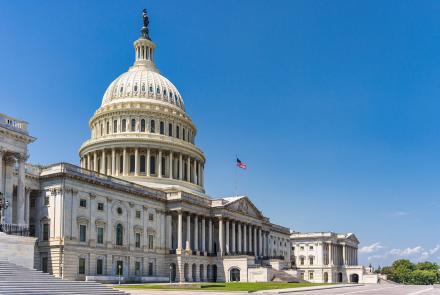
On March 13, 2017, The Congressional Budget Office (CBO) released its official “score” of the American Health Care Act, which is the legislation that would repeal and replace the Affordable Care Act. As a reminder, a CBO score is the official estimate of impacts of a piece of legislation under consideration in congress. These are the numbers that will be used when discussing the effects of this legislation for purposes of budgeting, the number of people covered, etc. The most basic summary is that the bill is expected to save the federal government money while increasing the number of uninsured individuals in the country.
In summary: The bill is expected to reduce government revenues by $900 billion over the 10 year period from 2017-2026, primarily due to repealing the majority of the ACA taxes. Despite the reduced revenues, the legislation would save the Federal government $300 billion since it reduces spending on health care and Medicaid by a total of $1.2 trillion over that period. The bulk of these savings comes from reducing Medicaid expenditures. CBO estimates that the bill will reduce total Medicaid spending by ¼ of the projected amount in 2026, for a total reduction of $880 billion in Federal spending. This amount would presumably be increased by states reducing their share of spending on the program in response to the limit in Federal spending. CBO’s projections estimate that 14 million fewer individuals would be served by Medicaid under this legislation, and there would be 24 million more uninsured people overall by 2026.
Substantial savings would also come from the repeal of the ACA subsidies (the advance premium tax credits) and the implementation of less generous refundable tax credits in the AHCA. The repeal of ACA credits would save $673 billion, which would be offset by $361 billion for new tax credits – resulting in a total saving of $312 billion over the ten-year period. The legislation is also expected to increase insurance premiums in the short term due to healthier people exiting the market, but decrease them in the long-run because of the reduced mandates regarding covered benefits and actuarial equivalency in the marketplace. CBO specifically notes that the premiums will decrease substantially for younger people, but will likely increase for individuals in their 50s and 60s due to insurers being able to charge older adults more under this bill than the ACA allowed.
Highlights from the CBO score (these are excerpts copied and pasted from the document):
· CBO and JCT estimate that enacting the legislation would reduce federal deficits by $337 billion over the 2017-2026 period. That total consists of $323 billion in on-budget savings and $13 billion in off-budget savings. Outlays would be reduced by $1.2 trillion over the period, and revenues would be reduced by $0.9 trillion.
· In 2018, 14 million more people would be uninsured under the legislation than under current law.
· Later, following additional changes to subsidies for insurance purchased in the nongroup market and to the Medicaid program, the increase in the number of uninsured people relative to the number under current law would rise to 21 million in 2020 and then to 24 million in 2026.
· In CBO and JCT’s assessment, however, the nongroup market would probably be stable in most areas under either current law or the legislation.
- Even though the new tax credits would be structured differently from the current subsidies and would generally be less generous for those receiving subsidies under current law, the other changes would, in the agencies’ view, lower average premiums enough to attract a sufficient number of relatively healthy people to stabilize the market.
· By 2026, average premiums for single policyholders in the nongroup market under the legislation would be roughly 10 percent lower than under current law, CBO and JCT estimate.
· A reduction of $880 billion in federal outlays for Medicaid;
- By 2026, Medicaid spending would be about 25 percent less than what CBO projects under current law.
· 14 million fewer Medicaid enrollees by 2026, a reduction of about 17 percent relative to the number under current law.
· Savings of $673 billion, mostly stemming from the elimination of the ACA’s subsidies for nongroup health insurance—which include refundable tax credits for premium assistance and subsidies to reduce cost-sharing payments—in 2020;
· A cost of $361 billion for the new tax credit for health insurance established by the legislation in 2020;
· Under the legislation, insurers would be allowed to generally charge five times more for older enrollees than younger ones rather than three times more as under current law, substantially reducing premiums for young adults and substantially raising premiums for older people.

